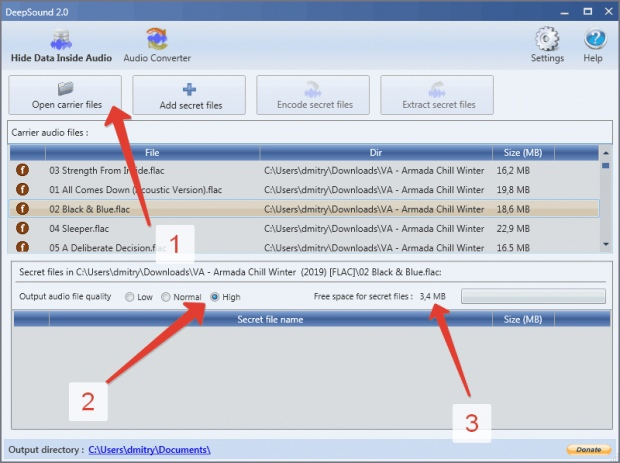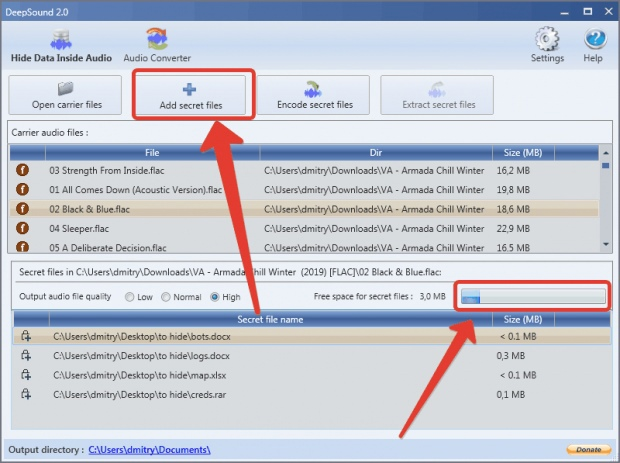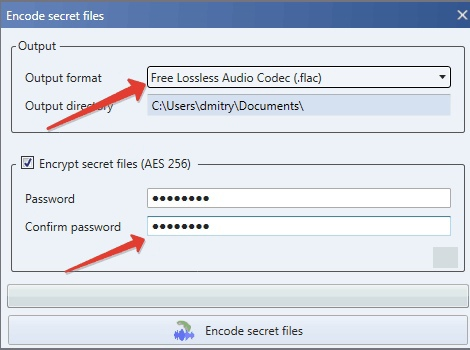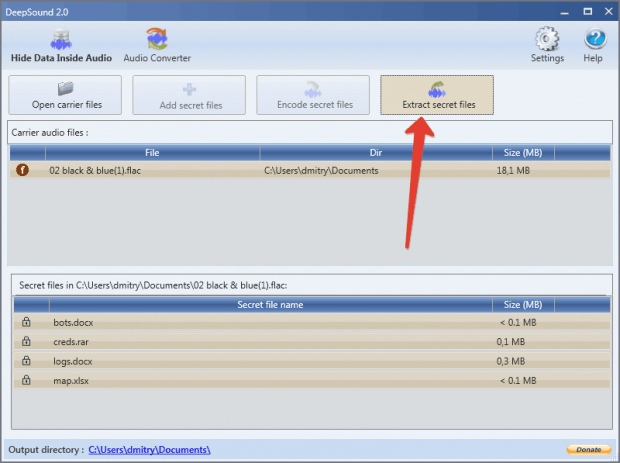I tell you how to hide absolutely any information in the song of your favorite artist
Greetings to all, dear friends!
Still, the best way to protect your information is to make sure that your files don't even look encrypted. For this purpose, steganography is also used, that is, the transfer of information masking the very fact of its transfer.
It's a different matter if you have an audio disc where all tracks are listened to. The " enemy” will simply have no reason to distrust the files and there is a high probability that the attention will be focused on something else.
Download (use existing) music in popular formats.
Open the audio file in the DeepSound program (by clicking the Open carrier files button):

You can also select the quality of the output file. The higher the quality, the less the output file will be damaged, but the smaller the amount of data that can be “smeared " inside. The output data format is FLAC / APE / WAV, so it is advisable to search for the input data in a similar format (although mp3 will also work).
Adding our hidden files (Add secret files button):

At the same time, we can see how the progress bar on the right side is filling up.If you can't exceed the volume, you can either degrade the file quality or split the data into other audio files.
Click the Encode secret files button

You will be prompted to encrypt the AES256 files based on the password. Let's agree. At the bottom is the “Encode secret files " button.
PROFIT.
To extract information, follow these steps::
Launching the DeepSound program.
Adding audio files (or only the desired one).
We respond to the suggestion of entering a password....with a password
In the window that opens, click the Extract secret files button:

The files will be extracted to the output directory.
Ready!
As you can see, there is nothing complicated in this. And yes, the "charged" audio file plays perfectly in the player and does not look suspicious at all.
Greetings to all, dear friends!
Still, the best way to protect your information is to make sure that your files don't even look encrypted. For this purpose, steganography is also used, that is, the transfer of information masking the very fact of its transfer.
Why is steganography better than a cryptographic container?
Let's say that you have an ancient CD that contains an audio collection of songs from your youth and you decide to transfer an archive with important documents on it that you would like to restrict access to. If you use a cryptographic container as one of the files, you may notice that the file is not played in the player audio player-the chance of burning out during manual viewing is quite small, but if automated entropy assessment tools are used, then cryptographic containers are searched for once or twice... And then, if the "enemies" found the stash, it's only a matter of time before they split it.It's a different matter if you have an audio disc where all tracks are listened to. The " enemy” will simply have no reason to distrust the files and there is a high probability that the attention will be focused on something else.
How is this possible?
Simple as that. Modern ways of representing data can be quite redundant, leaving unused data blocks inside the file. Or, in high-density files, you can try to “smear” the extraneous file in such a way that the quality of the original donor file is only slightly affected.… And then, with the help of automated tools “ "knock out" these pieces and assemble our secret file in its original form.I've seen that in the movies!
Exactly, Elliot Aldersen from the TV series Mr. Robot recorded audio discs with all the dirt on those he hacked. He used the DeepSound program, which will be discussed later.Action plan
Download the DeepSound 2.0 program.Download (use existing) music in popular formats.
Open the audio file in the DeepSound program (by clicking the Open carrier files button):

You can also select the quality of the output file. The higher the quality, the less the output file will be damaged, but the smaller the amount of data that can be “smeared " inside. The output data format is FLAC / APE / WAV, so it is advisable to search for the input data in a similar format (although mp3 will also work).
Adding our hidden files (Add secret files button):

At the same time, we can see how the progress bar on the right side is filling up.If you can't exceed the volume, you can either degrade the file quality or split the data into other audio files.
Click the Encode secret files button

You will be prompted to encrypt the AES256 files based on the password. Let's agree. At the bottom is the “Encode secret files " button.
PROFIT.
To extract information, follow these steps::
Launching the DeepSound program.
Adding audio files (or only the desired one).
We respond to the suggestion of entering a password....with a password
In the window that opens, click the Extract secret files button:

The files will be extracted to the output directory.
Ready!
As you can see, there is nothing complicated in this. And yes, the "charged" audio file plays perfectly in the player and does not look suspicious at all.
